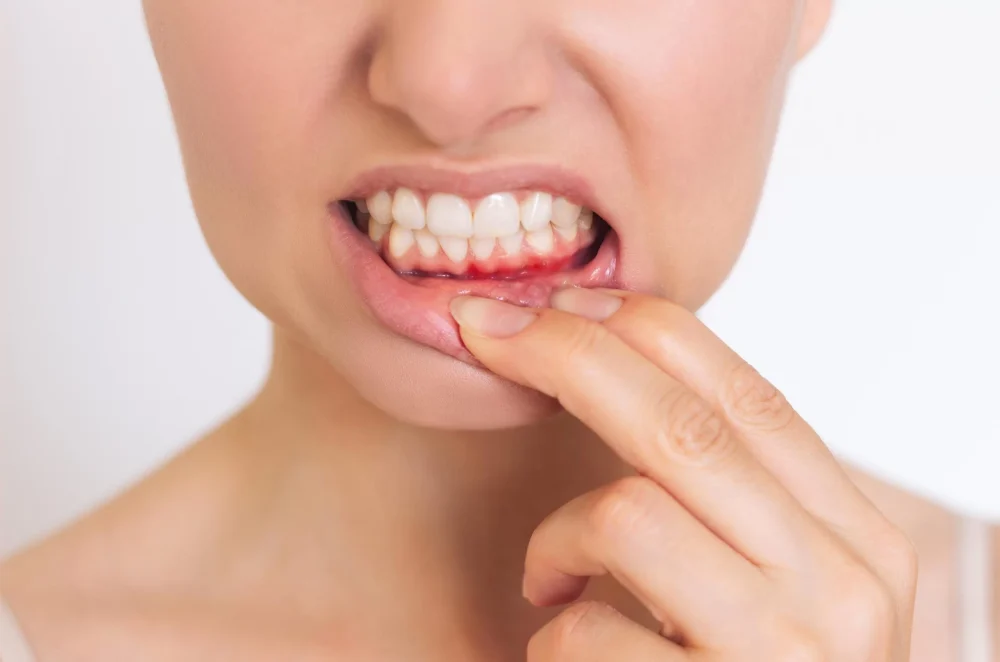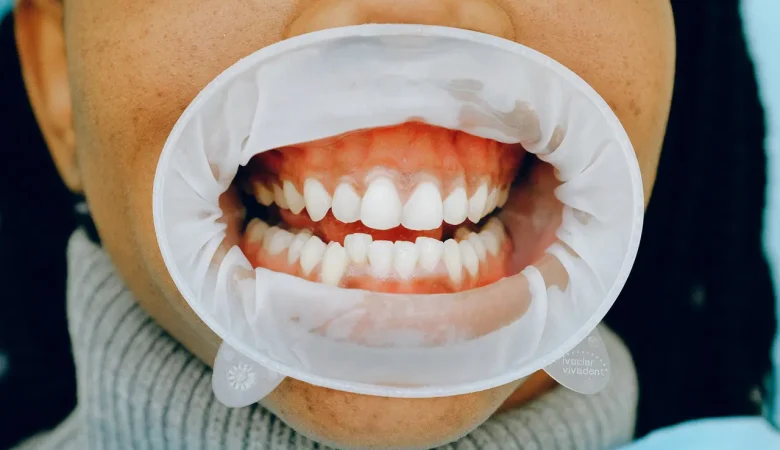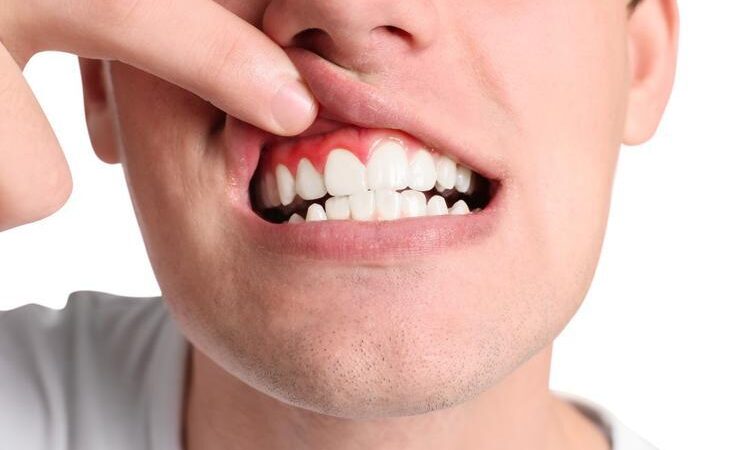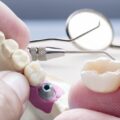The classic, hearty bite into the crisp apple. And there is a red trace? Are there traces of blood in the sink when you brush your teeth? Then it’s obvious: you have bleeding gums. A slightly metallic taste in the mouth can also be a sign. The cause of bleeding gums is usually acute inflammation of the gums. If the inflammation extends beyond the gums, it can also be periodontitis. In any case, if you notice regular bleeding gums, you should go to the dentist!
Why your gums are so important for your dental health
Our oral cavity is lined by a mucous membrane, which has different properties in different places. Near the teeth it consists of a multi-layered squamous epithelium, which is called the gums (gingiva). These gums are very resilient and can withstand attacks from hard and even sharp foods. It fits closely to the teeth and protects the sensitive necks of the teeth by acting as a kind of seal between the tooth and the bone. Together with the jawbone and the fibers that hold the tooth in the bone socket, the gums are also part of the periodontium.
The main cause of bleeding gums: bacteria
Bleeding gums can have many different causes, the most common being bacteria, usually in connection with poor oral hygiene. There are countless bacteria in our mouths that can be very damaging to our teeth and periodontium. Intact gums protect teeth and periodontium from the invasion of such bacteria. Healthy gums feel firm, have a pale pink color and are slightly ridged on the surface.
If the gums are not healthy and can no longer fulfill their protective function or can only do so inadequately, inflammation can easily occur. The bacteria settle in the spaces between the teeth and can multiply and spread undisturbed – even into the depths. They penetrate into the pocket between the tooth and gums and trigger inflammation, which manifests itself in the form of bleeding gums. Redness and swelling are other common symptoms. Now the body reacts like it does with any other inflammation: Our defense system tries to flush out the bacteria by increasing blood flow to the affected area and thus fight them. This reaction causes the gums to swell, can become deeply red due to the dilated blood vessels and can become very sensitive and cause bleeding to even light pressure or brushing of the teeth.
The consequences of bleeding gums and gum inflammation: gingivitis and periodontitis
Bleeding gums caused by bacteria, known as gingivitis, almost always arise from poor oral hygiene. Within a short time after eating, a thin layer of plaque forms on the teeth, known as plaque. This layer thickens if the teeth are cleaned too rarely or if certain areas are not reached when brushing, this is especially true for the spaces between the teeth. The plaque can then develop into solid dental plaque – tartar, which provides the best basis for bacteria to multiply. Gingivitis can usually be cured with thorough cleaning.
The situation is different if the inflammation not only affects the gums, but the bacteria have already worked their way deeper into the periodontium and attacked it. This is then chronic periodontitis. The gums recede (gum loss) and the jawbone recedes (bone loss). If these symptoms are not treated, the teeth will become loose over time and tooth loss may occur. Periodontitis is the most common cause of tooth loss in old age. Reason enough to stop gum inflammation early.











